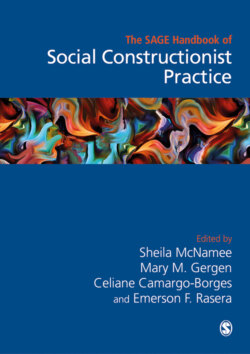Читать книгу The Sage Handbook of Social Constructionist Practice - Группа авторов - Страница 166
На сайте Литреса книга снята с продажи.
Meaning is Controlled by Language Relationships
ОглавлениеFor social constructionists, language constitutes what we take as real. Language is the vehicle by which cultures communicate and weave the fabric of our relational understandings of the world. How practitioners and clients name things matters. Collaborative language systems (Anderson, 1995) and open dialogue (Seikkula et al., 2006) are two examples of approaches that use the idea of language and word choice as the cornerstone of meaning-making and change. The constitutive influence of language encourages the social constructionist informed practitioner to explore, challenge, and expand word meaning. A practice example would be interrogating with a client the assumed negativity of a word choice such as ‘anxiety.’ Might there be positive aspects of anxiety? Additionally, is anxiety the only way to name what the client is experiencing? What would be the implications of naming the experience something else? This example illustrates a way to escape the limited understandings of language and expand word choice and meanings in ways that have the potential to collaboratively establish new meanings in the lives of clients and relationally transform them.
